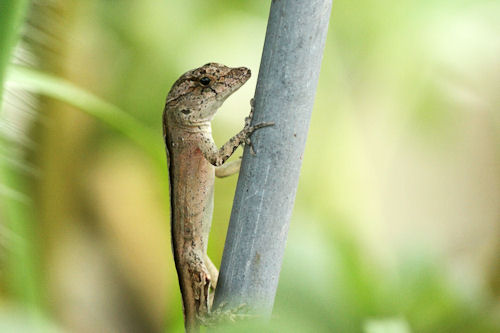Plants and animals across the globe are dealing with increasingly changing environments resulting from urbanization. One such habitat alteration is artificial light at night (ALAN) that may affect how animals acquire or use energy. Because brown anoles (Anolis sagrei) are common invaders of urban habitats, they make good models to examine the consequences associated with ALAN. Thus, Chris Thawley of Jason Kolbe’s lab at University of Rhode Island altered the level of ALAN on female brown anoles to examine how ALAN might affect morphology, reproduction, and stress.
If this sounds familiar, Chris talked about this work at the 2017 JMIH meeting, which caught Anole Annals press. To recap, Chris found that ALAN increased female growth, advanced the start of egg laying to earlier in the season, and increased the reproductive output of smaller females. However, he hypothesized that such beneficial effects would be countered by negative effects on other traits. Thus, Chris measured levels of the stress hormone corticosterone in the blood of females, hypothesizing that those exposed to ALAN would have higher stress. Although marginally non-significant, females actually tended to have lower corticosterone levels. Chris presented new data for this presentation showing that male corticosterone levels were unaffected by ALAN too, suggesting neither adult male nor female brown anoles have a stress response to artificial light.
Thus, it appears ALAN exposure over this 7-week study was beneficial for brown anole reproduction. However, Chris cautioned that there may be negative consequences on other traits such as immunity or HPA function. ALAN might also induce negative consequences for reproduction later in life, such as a reduced lifespan. I recommend keeping an eye on the Kolbe lab to find out!















